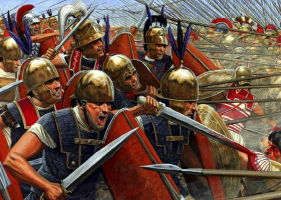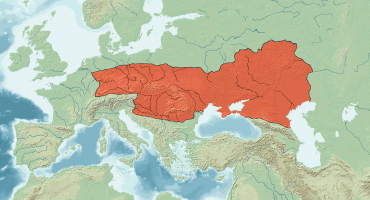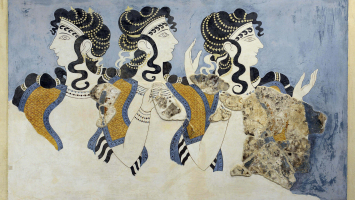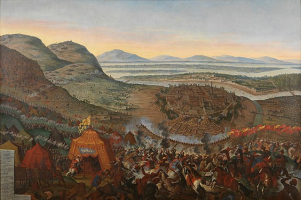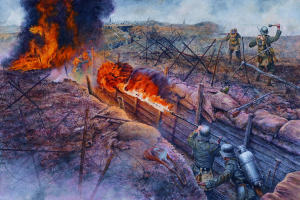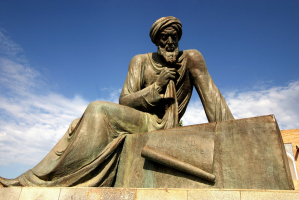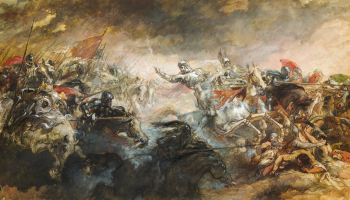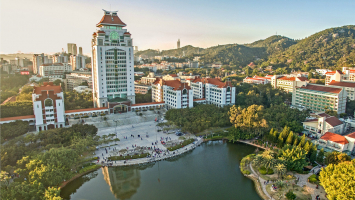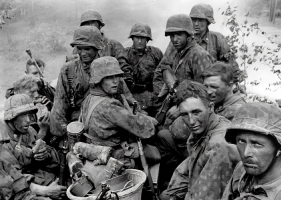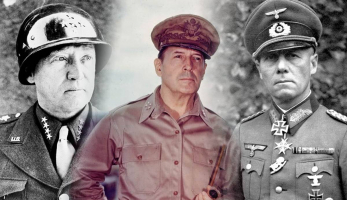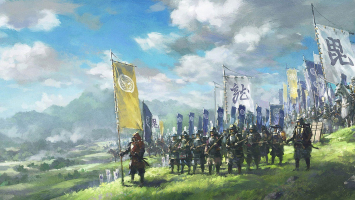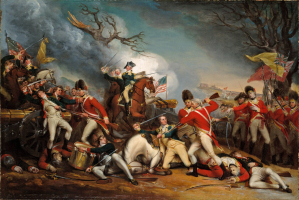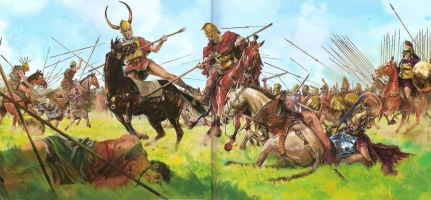Top 10 Forgotten But Important Battles From History
The globe has been changed by many battles throughout history, for better or worse. Some of them, from Napoleon's tragic defeat at Waterloo to the World War II ... read more...combat at Stalingrad, are still regarded as major historical turning moments. The majority, however, continue to be largely forgotten outside of the countries that fought them, either because they were largely forgotten about or because the larger conflicts they were a part of overshadowed them.
-
It's challenging to grasp just how large the World War II Battle of Kursk was. It is frequently referred to as the greatest significant fight of World War II because it effectively brought an end to the German war machine and shifted the tide of the conflict in the allies' favor on the eastern front.
It is without a doubt the largest tank combat in history. The gigantic confrontation, which encompassed more than two million soldiers, 8,000 tanks, and 5,000 warplanes, was actually composed of numerous offensives and counter-offensives that stood alone as separate battles.
German forces attacked the Soviet front line from July 5 to August 23, 1943, in a last-ditch effort to turn the tide of Operation Barbarossa. A win here may severely hamper the Soviet forces moving toward Berlin. However, the Soviet generals were able to foresee the onslaught and had previously set up anti-tank batteries and strengthened defense lines prior to the German assault.
It was ultimately won by the USSR, which decisively put the German army on the back foot and prepared the way for the huge Soviet offensives of 1944 and 1945, even though there were times when both sides appeared to have a chance to win.
Date: 5 July 1943 – 23 August 1943 (1 month, 2 weeks and 4 days)
German offensive: 5 July 1943 – 16 July 1943
Soviet offensive: 12 July 1943 – 23 August 1943
Location: Kursk, Kursk Oblast, Russian SFSR, Soviet Union
Result: Soviet victory
Territorial changes: Soviets regain territory along a 2,000 km (1,200 mi) wide front after the battle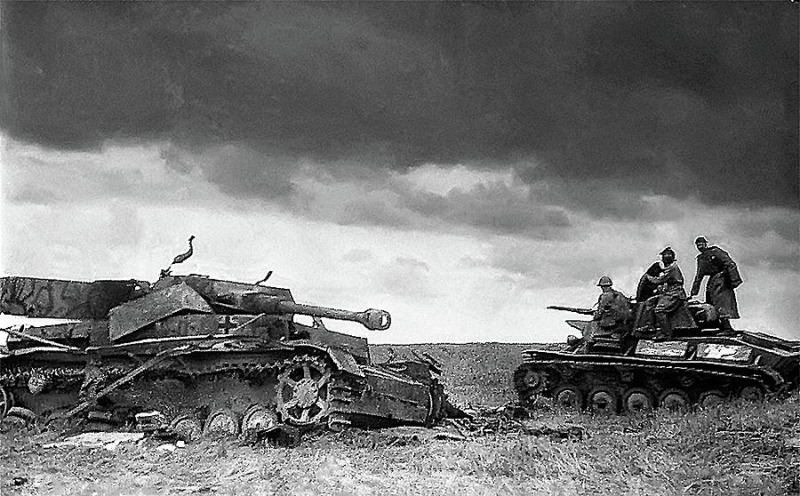
https://fineartamerica.com 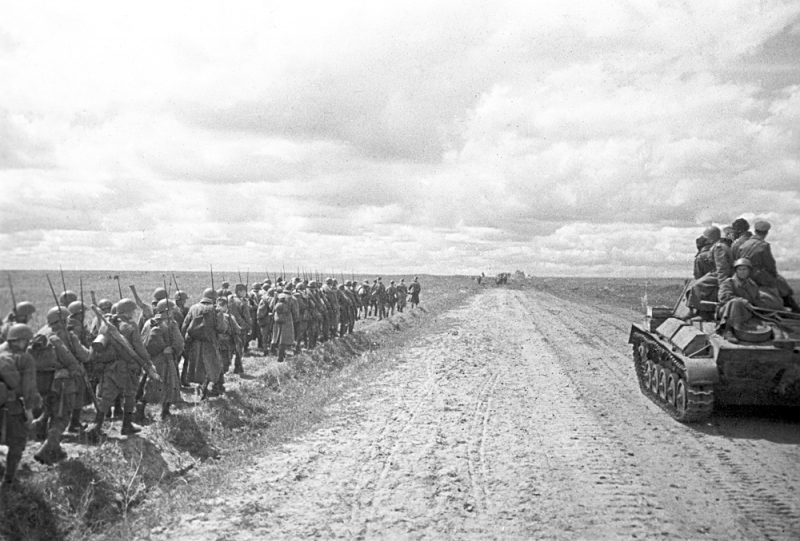
https://www.rbth.com -
Despite their importance, the concurrent battles at Kohima and Imphal in northeastern India are frequently referred to as the Stalingrad of the East outside of Britain. They witnessed some of the most intense action in the south-eastern theater of the war between March and July 1944, and they ultimately proved to be a turning point for the overall Japanese operation in the area.
The conflicts were primarily a struggle for control of the British-controlled bases in India and were fought between the Japanese 15th Army and the British 14th Army, which was primarily composed of forces from the north-eastern region of the Indian subcontinent.
Despite having intact supply lines and local expertise, British forces were at least 10:1 outnumbered, according to even the most pessimistic estimations. By May, the Japanese forces were plagued with epidemic sickness and other logistical problems in addition to the battle, tipping the balance in favor of the defenders.
Date: 4 April – 22 June 1944 ( Battles Of Kohima)
Location: Kohima, Nagaland, British India
Result: Allied victoryDate: 8 March – 3 July 1944(Battles Of Imphal)
Location: Imphal, Manipur, IndiaResult: British Indian victory
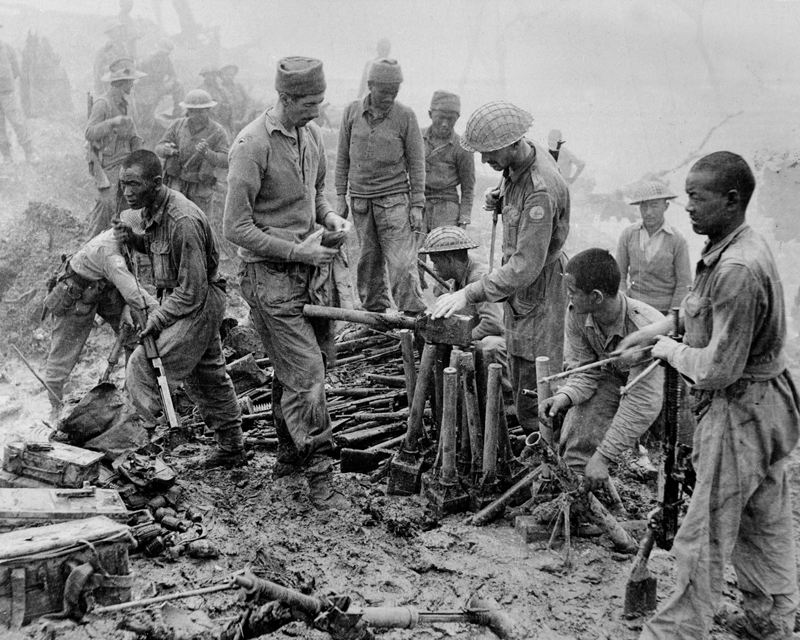
https://www.nam.ac.uk/ 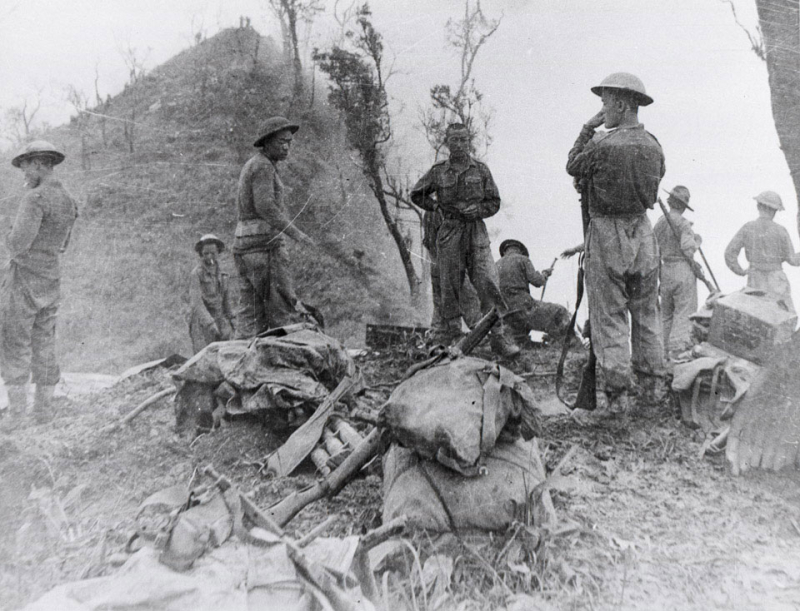
https://collection.nam.ac.uk/ -
Although the Franco-Prussian War of 1870 is mostly forgotten in the overall framework of everything that came after it, the struggle would have profound effects on Europe and the rest of the world. It was fought between a coalition of Prussian states led by Otto von Bismarck and France under Napoleon III starting in July of that year. Both were products of the 1848 revolutions and by that point were strong powers in Europe.
One of the biggest battles in European history took place there. Though those numbers would significantly increase by the time it was ended, the original Prussian force had more than 500,000 soldiers and exceeded the French by a ratio of roughly 2:1. While France had a few early victories, they generally couldn't compete with the Prussian armies because of logistical and communication problems.
The siege of Paris, which started in September 1870 and ended with the French surrender in January 1871, brought the war to a close. Along with the consolidation of public support for German militarism across the formerly split Prussian states, which would become a determining element in German affairs until 1945, it would be one of the causes that contributed to the unification of Germany later that year.Date: 19 September 1870 – 28 January 1871 (4 months, 1 week and 2 days)
Location: Paris, France
Result: German victory- Proclamation of the German Empire and the Paris Commune
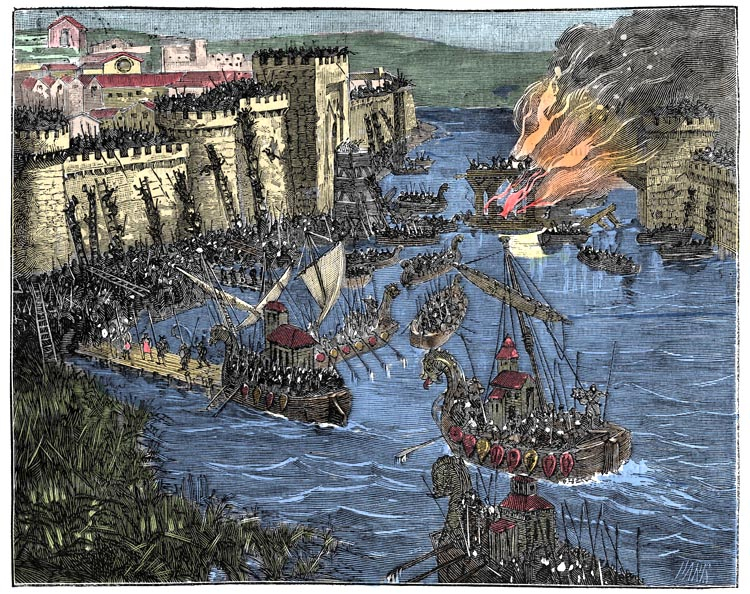
https://warfarehistorynetwork.com 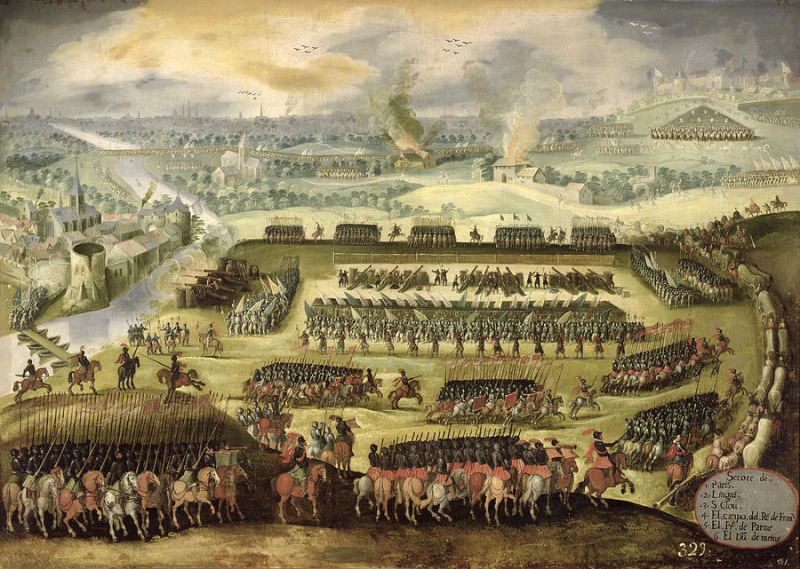
https://fineartamerica.com -
The Battle of Amiens, which took place in France during World War 1, was actually a sequence of numerous allied offenses. The Paris-Amiens railway line was initially intended to be protected from a German invasion; nonetheless, it would eventually become recognized as the start of the Hundred Days Offensive, which effectively ended the war in favor of the allies.
The Canadian Corps, the British Fourth Army, the French First Army, and the Australian Corps, along with a few other friendly troops, made up the majority of the attacking force when the offensive started on August 8, 1918. The German forces were vastly outnumbered even though they were surrounded by three lines of trenches.
The allies took care to launch a smoke-covered surprise attack with the aid of the Royal Air Force. They marched more than eight miles in three days, killing more than 26,000 Germans and capturing more than 12,000 others, effectively ending the German war effort in the area.
Date: 8–12 August 1918 (major combat)
Location: East of Amiens, Picardy, France
Result: Allied victory- Start of Hundred Days Offensive
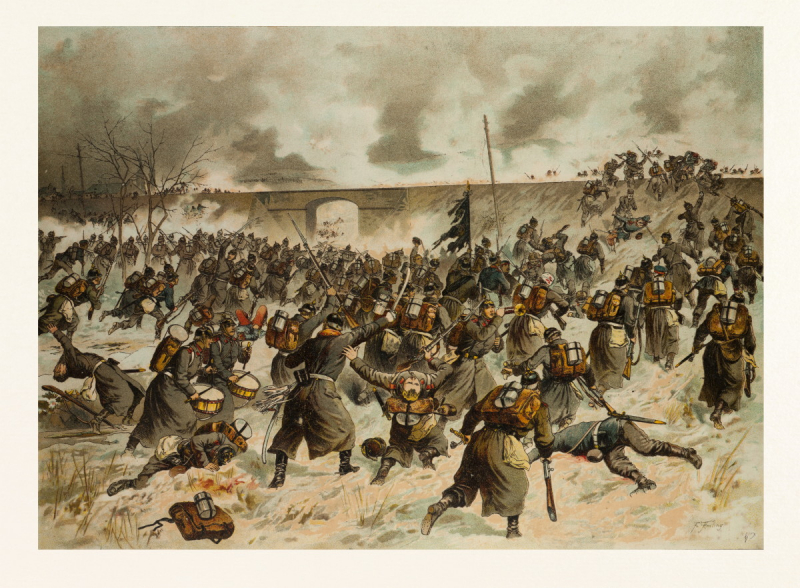
https://www.history.com 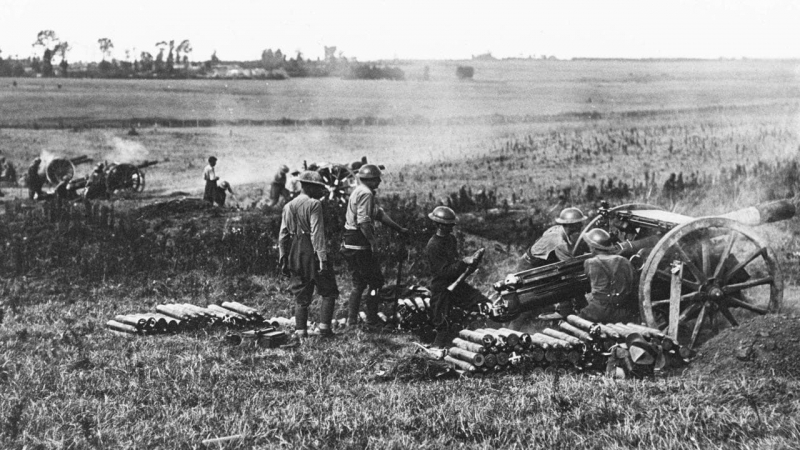
https://www.goldcoastbulletin.com.au/ -
Tenochtitlan, the capital of the Aztecs, was by all accounts a fully constructed, bustling city prior to the Spanish conquest. Hernán Cortés, the commander of the conquistadors dispatched to annex it to Spanish dominion, described it as a sizable city with a complex web of parallel roads and canals, as well as a bustling marketplace frequented by more than 60,000 people daily.
All of that would abruptly come to an end in 1521 when Cortés' soldiers besieged it alongside thousands of other native allies who had their own power-seeking objectives. Despite having a significant numerical advantage over the Spanish army, Cortés' superior artillery easily defeated the Aztecs. The recent smallpox outbreak, to which the Aztecs had almost no immunity, made things worse for them. In order to put an end to further resistance to Spanish control, the invading force that overran Tenochtitlan in August 1521 killed thousands, if not tens of thousands, of the city's citizens.
The fight accelerated the demise of the Aztec empire, and within the following three years, Spain had taken control of the whole Mesoamerican region, ushering in an era that saw the colonization of the other American continents.Date: May 26 – August 13, 1521 (75 days)
Location: Tenochtitlan, present-day Mexico City, Mexico
Result: Tlaxcallan and Spanish victory- Fall of the Aztec Empire
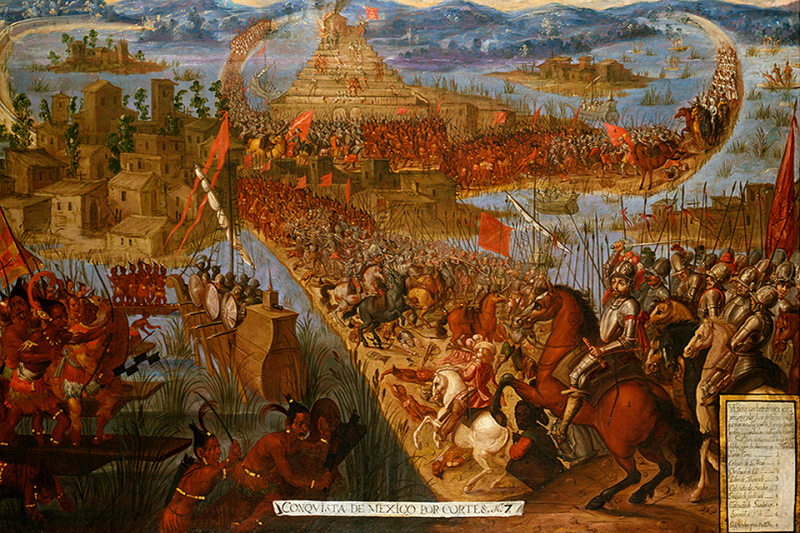
https://www.histclo.com 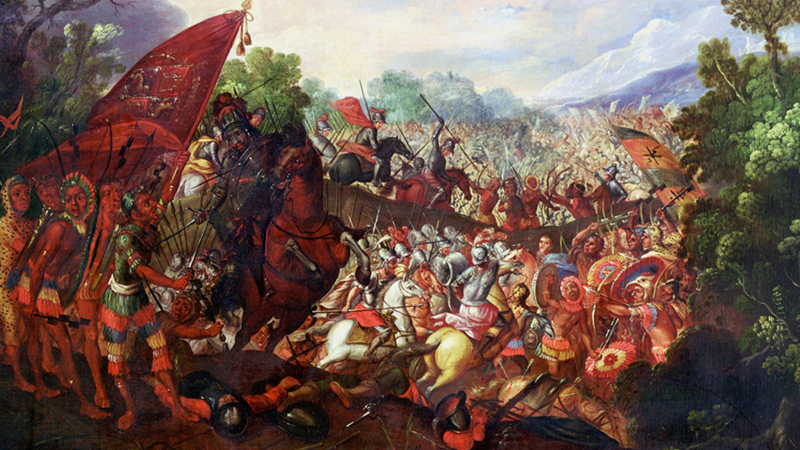
https://www.kanopy.com/ -
The naval battle of Tsushima in 1905 between Japan and Russia wasn't a world-changing event in and of itself. It had little direct impact on world politics, lasting just two days in late May 1905 and ending in a resounding Japanese triumph. It could even be written off as one of the many confrontations that took place prior to the devastation of the two world wars.
Because it was the first modern naval combat incorporating wireless telegraphy and steel battleships, the battle's actual significance could be appreciated in its place in the overall scheme of things. More significantly, it had long-lasting effects within the two nations. The conflict bolstered the most militaristic groups within the army in Japan and reaffirmed the military's superiority in the eyes of the general public.
These factions would go on to play a significant part in the events of the decades that followed. The defeat and nearly total annihilation of the Baltic fleet in Russia sparked a number of mutinies, including the Potemkin rebellion. That would directly pave the way for the 1917 revolutions and the subsequent civil war in Russia, along with the revolution earlier in the year.
Date: 27–28 May 1905
Location: Straits of Tsushima
Result: Japanese victory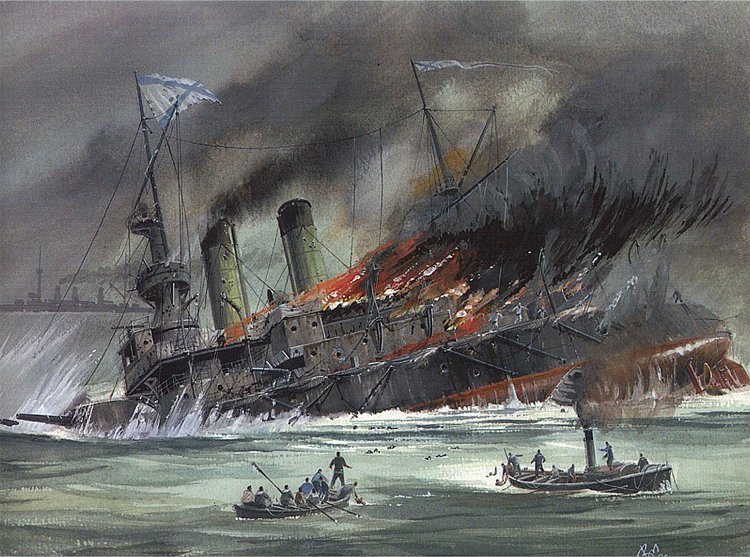
http://www.ancientpages.com 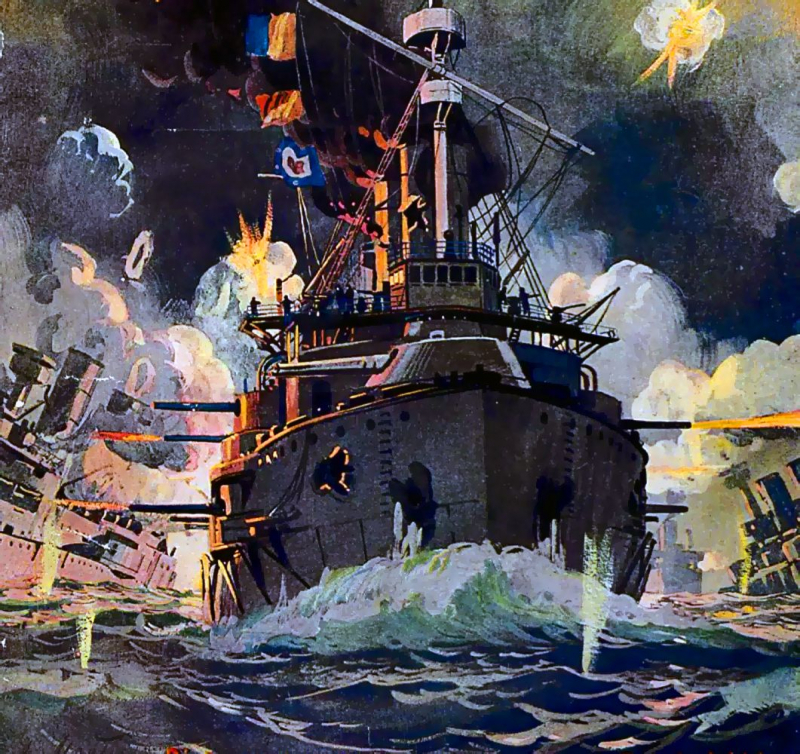
https://www.pinterest.fr/ -
Since much of Islam's history is veiled in tradition, it is challenging to pinpoint precisely what occurred in the religion's early years. However, there are significant occurrences that we are aware of from other reliable sources, and the Battle of Badr was unquestionably one of them. The Battle of Medina, which took place in 624 AD between the mighty Quraysh confederation of tribes in Mecca and Prophet Mohammad's armies in Medina, would turn Islam from a fledgling faith into the official religion of one of the greatest and most illustrious empires in history.
The estimated number of men involved in the conflict was roughly 1,300, and while several explanations have been offered for the Islamic victory's eventual outcome, it has frequently been credited to Mohammad's superior abilities as a military leader. For the Quraysh tribe, it was the beginning of the end since it brought much of the prosperous economy of Mecca under Mohammad's dominion. Six years later, the Quraysh chiefs peacefully handed over Mecca to Mohammad after converting to Islam.
Date: 13 March 624 CE (17 Ramadan 2 AH)
Location: Badr, Hejaz (present-day Saudi Arabia)
Result: Muslim victory- Survival of the Muslims
- Start of Muslim–Quraysh War
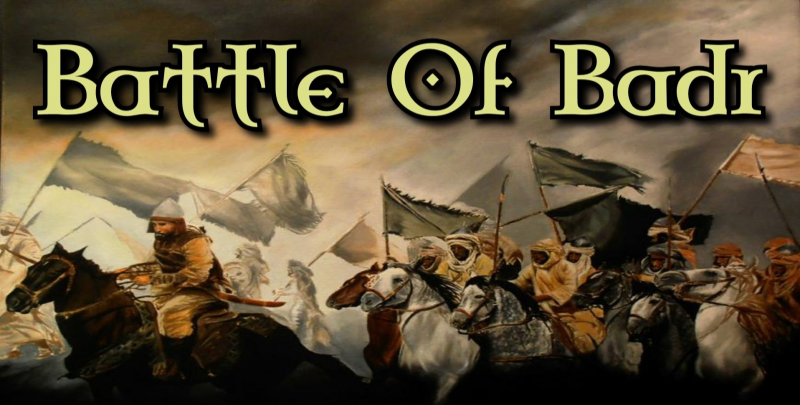
http://www.the-faith.com 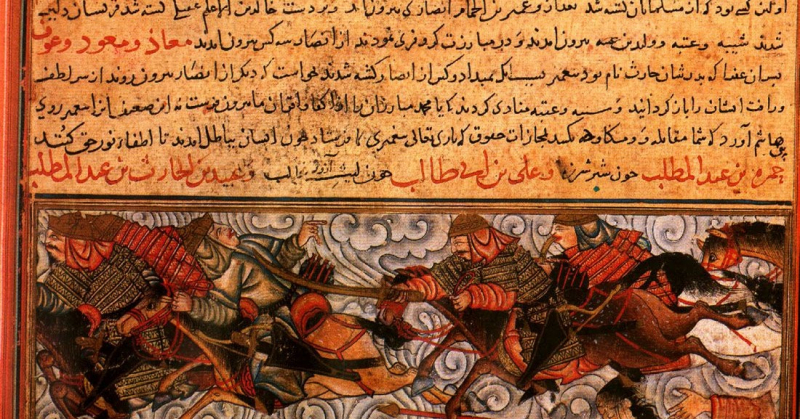
https://serendibnesan.blogspot.com/ - Survival of the Muslims
-
Although it was a pivotal turning point in north and east European affairs in the 17th and 18th centuries, the Great Northern War may be a forgotten struggle today. It would forever alter the balance of power on the continent and was fought between Sweden, one of the major European powers at the time, and the Polish-Lithuanian Commonwealth, Denmark-Norway, and Russia at various points.
Russia fought to the last end, but the other belligerents were soundly defeated early on. After a series of unsuccessful offensives elsewhere, Swedish forces under Charles XII chose to raid the Russian bastion of Poltava in what is now central Ukraine. This was the turning point in the conflict.
It would prove to be a costly oversight that would irrevocably terminate Swedish hegemony in the area. In addition to the traditional historical disadvantage of confronting Russian forces on home soil, the Swedish army was outnumbered and struggled with a lack of coordinated action. Nearly 10,000 Swedish soldiers had been killed or taken prisoner by the time the battle was completed, and Charles had to retreat to Ottoman territory to avoid being apprehended. Russia became the dominating force in the Baltics and Poland as a result of the fight, which effectively brought an end to the Swedish empire.
Date: 8 July 1709
Location: Poltava, Cossack Hetmanate, Russian Empire (present-day Ukraine)
Result: Russian victory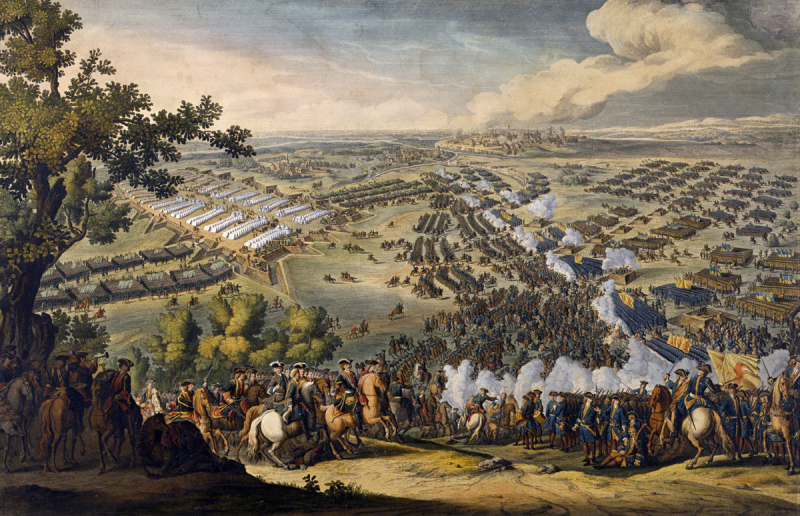
https://www.rbth.com 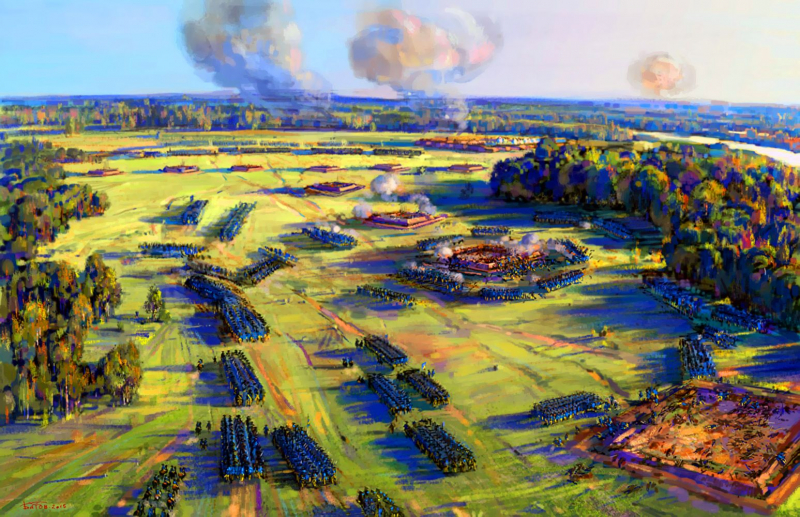
https://www.pinterest.es/ -
For good cause, the Battle of Gaugamela, also known as the Battle of Arbela, which is now Erbil in Iraq, is occasionally referred to as the most significant battle in Alexander's military career. It was the pivotal battle of the Macedonian war in Persia, fought in October 331 BC.
The outcome may have seemed certain at the time, but the Persian contingent, which included battle-tested troops of scythed chariots and war elephants, outnumbered Alexander's forces by at least a 2:1 margin. The Persians also selected the open field of combat because it greatly suited their particular fighting strategy.
Although the exact specifics of the conflict are difficult to discover because it took place a long time ago, later accounts reveal that Alexander's cavalry ultimately determined the victory. In total, 700 Macedonian warriors died that day, as opposed to more than 20,000 Persian soldiers.
Darius himself was compelled to leave the area of combat, albeit one of his own province governors later assassinated him. The conflict brought the mighty Persian empire to an abrupt end, opening the door for further Hellenization of West Asia.
Date: 1 October 331 BC
Location: Probably Tel Gomel (Gaugamela) near Erbil, modern Iraqi Kurdistan
Result: Macedonian victory
Territorial changes: Alexander gains Babylon, half of Persia and all other parts of Mesopotamia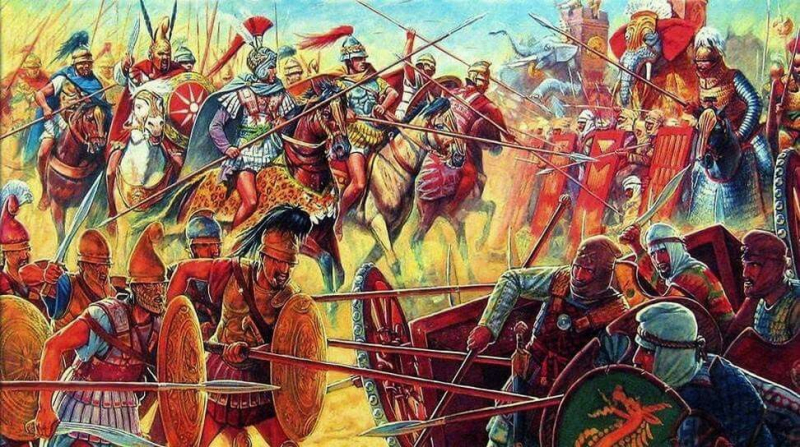
https://www.pinterest.com 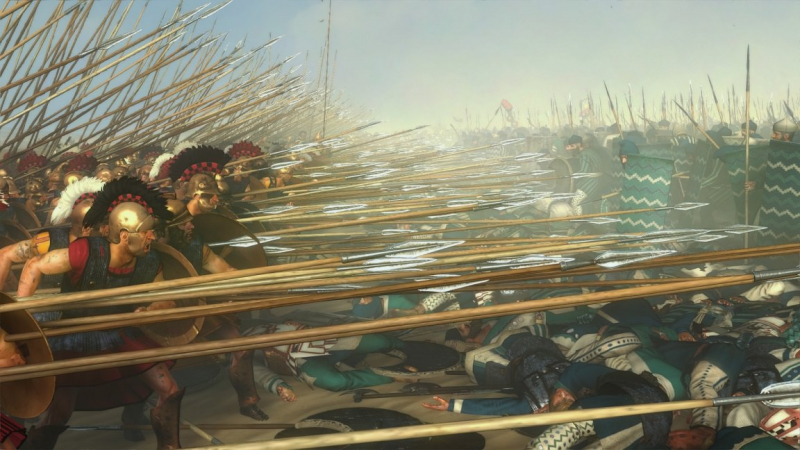
https://brewminate.com/ -
Due to the fact that current Mongolia is hardly the same country as it once was, it is impossible to understand the menace that the Mongol Empire once posed. That wasn't the case, though, in the 13th century, when the Mongol war machine was at the height of its power and posed a threat to the security of virtually every nation on the Eurasian mainland, as well as perhaps beyond.
The Battle of Ain Jalut, fought in September 1260 between the Mamluk dynasty of Egypt and the south-western Mongol army stationed in Syria, had this historical setting. Cairo was the final Islamic bastion in the area after Aleppo and Baghdad fell to the Mongols in recent years, so it was a part of their bigger plan to conquer the Islamic world.
They were unaware of the Mamluks' true might, however, as they were able to employ the traditional Mongol strategy of feigned retreat better than the Mongols themselves. Despite the fact that the two forces were almost equal in size, the fight led to the total destruction of practically the entire Mongol presence in the area. It was the first significant Mongol defeat in south-west Asia, which boosted the confidence of neighboring Islamic nations and largely put a stop to the Mongols' Westward expansion.Date: 3 September 1260 (26 Ramadan 658 H)
Location: Near Ayn Jalut, Galilee, Israel
Result: Mamluk victoryTerritorial changes: Territories captured by the Mongols are returned to the Egyptians.
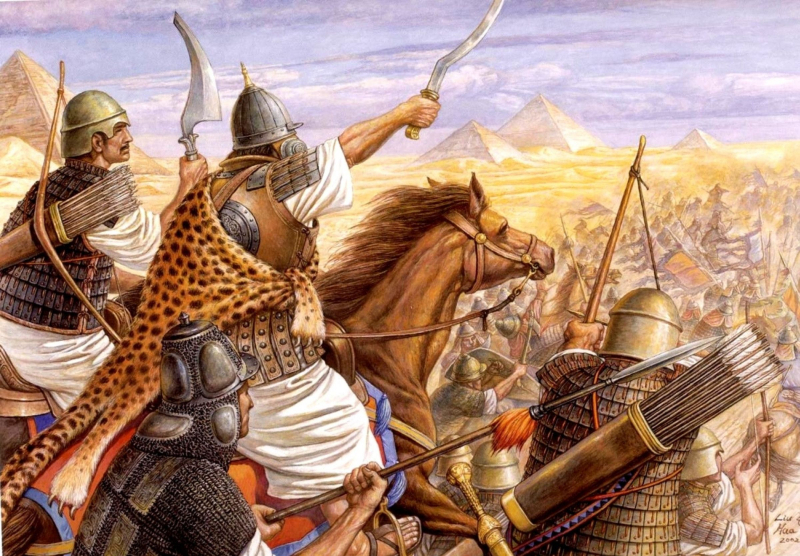
https://www.pinterest.com.au/ 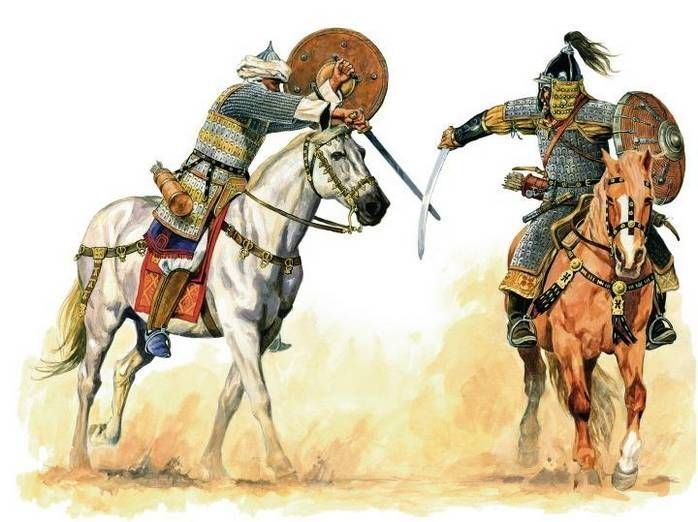
https://alchetron.com












